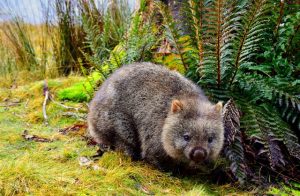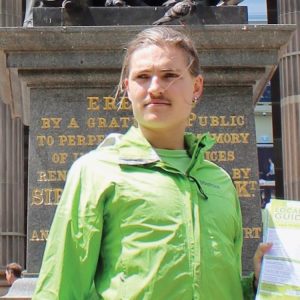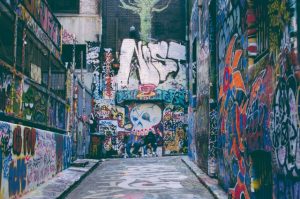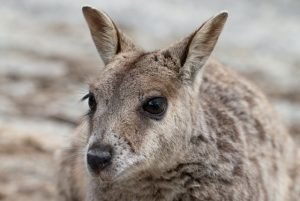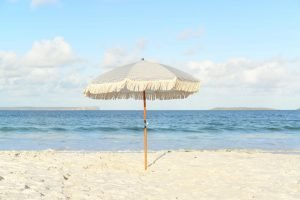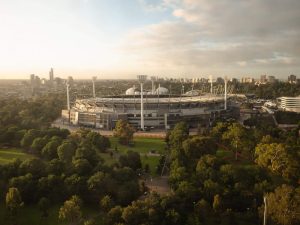Millions of years ago, the Australian continent split off and drifted away from the rest of the world. Over time, Australia’s geographic isolation helped to develop an extremely unique set of flora and fauna. So much so in fact, that between 85-90% of its animal species are endemic, that is to say, that Australia is home to many animals which cannot be found anywhere else in the world. As part of your trip, you may be eager to meet some of the Australian animals which we’ve listed below. We’ll provide you with some tips and tricks on where to find some of our most famous furry friends in the wild, as well as in sanctuaries.

Where can I find koalas?
If you knew someone who spent 19-20 hours a day sleeping and the majority of their four waking hours eating leaves, you’d be rightly concerned for their health and sanity. Commonly ranked as one of the sleepiest animals in the world, Koalas sure have a pretty enviable lifestyle. The name koala comes from the indigenous Dharuk language, meaning ‘no drink’ – these furry friends are known to drink very little water, meeting almost all of their hydration needs through the moisture held within the kilogram worth of eucalyptus leaves they munch on each day!
If that’s not wild enough for you, consider this: eucalyptus leaves are super tough to chew and poisonous for most animals. Luckily for koalas, they have a long digestive organ which allows them to break down the leaves unharmed.
One of the best places to find these cuddly buddies is along the Great Ocean Road. If you see cars parked on the side of the road alongside people strangely looking up into the trees, chances are that they’ve spotted some koalas!
The Great Ocean Road is a full day trip, an early start is a must and it is best explored by rental car. Beginning in Torquay, an hour and a half’s drive from Melbourne, the Great Ocean Road winds its way around Victoria’s gorgeous South-Western coastline for 240km. There are also many companies which run bus tours along the Great Ocean Road.

Where can I find kangaroos?
With a hop, skip and jump kangaroos are known for being able to reach speeds of 56km/h (34mph) and are able to jump more than 9 metres (29ft) in a single bound. Unless you’re as tall as an AFL ruckman, chances are that kangaroos are taller than you. If standing upright on their hind legs like a human, kangaroos can be over 2 metres tall and weigh 90kg. (We strongly advise against getting into fights with kangaroos!! Even if it might make for a “cool story” or make you outrageously famous back in your hometown, please, don’t do it!!)
With a population exceeding 50 million, there are twice as many kangaroos as there are humans spread right across the Australian continent. Whilst kangaroos live without threat from any predators, they are hardy creatures who have adapted to living in hot, harsh and dry environments.
You have a good chance of seeing kangaroos on the lawns of sporting facilities around country Victoria. Along the Great Ocean Road, the Anglesea Golf Club seems to be a favourite spot for roos (apparently the grass of golf courses is super yummy).
Otherwise if you go to the Grampians, stopping by in the town of Halls Gap along your way, you have a fair chance of seeing kangaroos around town, as well as emus. The Halls Gap Recreation Reserve in particular is known for being a roo hotspot.
Like the Great Ocean Road, it is highly advisable to begin your trip up to Halls Gap and the Grampians early in the morning. It’ll take you three hours to drive up there. A car will give you the most freedom to wander around and to go for walks and hikes at your own pace, though many companies also operate bus tours which’ll help you explore the area.
Animal Sanctuaries
As magical as it is to spot an animal in the wild, if you’re wanting to see a wide array of animals in a single day and to guarantee a close encounter, your best bet is to go to one of Victoria’s animal sanctuaries. We’ll list a couple options of the best animal sanctuaries below:
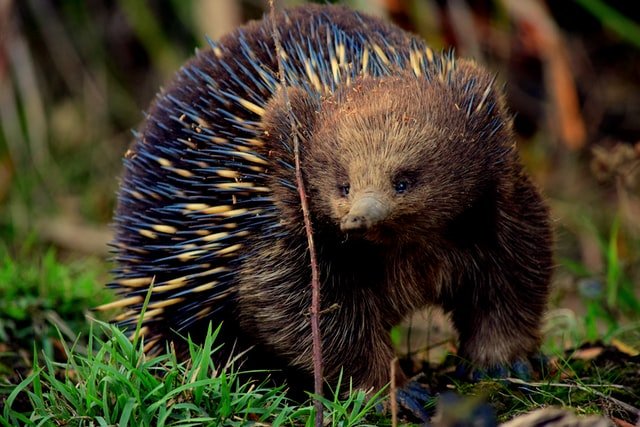
Healesville Sanctuary
Probably the most famous of Victoria’s animal sanctuaries, Healesville is home to over 200 species of native birds, mammals and reptiles, all within a beautiful bushland setting. The classics are all here: kangaroos, koalas, as well as animals notorious for being incredibly difficult to find in the wild, like the shy and elusive platypus. There are lots of options for those who do not have a rental car to reach Healesville Sanctuary. Firstly, it is possible to take a regular train from the Melbourne city centre to Lilydale, which takes about 75 minutes. From Lilydale station, you need to catch bus 685 to Healesville. Then a connecting bus (686 towards Badger Creek) will take you to Healesville Sanctuary.
Alternatively, there is a special ZOOBus shuttle service which departs daily from Melbourne’s CBD direct to Healesville Sanctuary. If interested, you’ll need to book your tickets online here: https://www.zoobus.com.au/
If you have your own rental car, the drive from Melbourne to Healesville Sanctuary, which takes you through the spectacular Yarra Valley wine region, will take you approximately one hour.
Given its location in regional Victoria, we recommend you start your day early, aiming to get to the sanctuary in the morning and allocating an entire day to Healesville Sanctuary. There is lots to see and do, with many educational and kids programs and a chance to have a closer encounter with kangaroos and Australian owls.
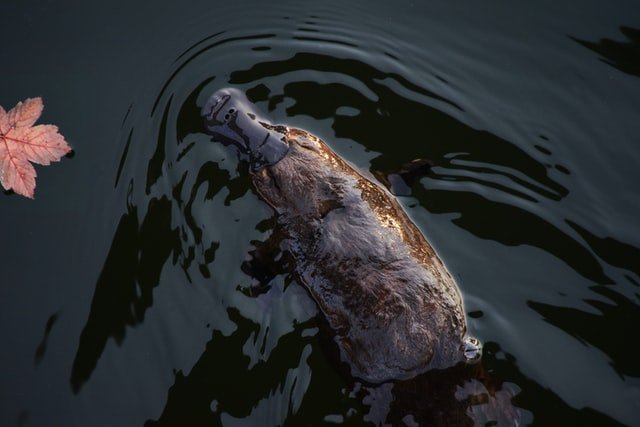
Moonlit Sanctuary
Home to 70 different native animals, including many favourites but also many interesting animals you may never have heard about before like quolls, sugar gliders and Tasmanian devils. You can have the opportunity to hand feed friendly free-roaming wallabies, kangaroos and pademelons (yes that’s the name of a real animal).
Moonlit Sanctuary offers short close-up encounters with koalas, wombats, dingoes and dingo puppies which need to be organised ahead of time by online booking. These encounters will give you time to stroke, cuddle and take selfies with these beautiful animals. For more information, visit: https://moonlitsanctuary.com.au/visit/animal-encounters/
Also, the Moonlit Sanctuary runs special night tours, where you can see nocturnal animals: https://moonlitsanctuary.com.au/night-tours/
Located just 50 minutes drive from Melbourne, Moonlit Sanctuary is also quite close to central Melbourne. It is located south-east of Melbourne’s CBD, at the top of the Mornington Peninsula and on the way to the Penguins on Phillip Island.
It is possible but also much more difficult to reach Moonlit Sanctuary without a rental car. You’ll need to take a 75 minute train trip to either Frankston or Cranbourne train stations, and then from there take bus 776 or bus 792 respectively. Like with the bus services to Healesville Sanctuary, check public transport timetables to plan your journey before you go on: www.ptv.vic.gov.au as these buses do not run very frequently.
Similar to the Healesville Sanctuary, or any trip to regional Victoria for that matter, it is best to start your day early and leave plenty of time to explore both Moonlit Sanctuary and other areas of the Peninsula, like the beach, especially if you have a rental car which will allow you to travel around easily.
While we hope the above advice has helped to clarify the best ways to find Aussie wildlife, we must also remind you that Australia is a dangerous place. Our animals can be unforgiving. During your encounters with ANY Australian animal, never forget to wear protective gear. Please click on the video link below for an ideal model of how to dress appropriately for a close encounter with a koala.
(Relax, we’re only joking – but check this video out for a look at “drop bears”! – https://www.youtube.com/watch?v=KCGUNpzjD6M&ab_channel=7NEWSAustralia)
If you are unsure of how to prepare for an animal encounter, or you’re looking for more tips on where to find other beautiful animal species like penguins, echidnas and possums, we’d love to see you for one of our Melbourne tours, which run every day. Come along and say hi, we’d love to meet you on one of our tours starting from in front of the State Library at 10:30, 2:30 and 3pm(winter)/6pm(summer) each day!
If you succeed in surviving your animal encounters whilst in Melbourne and you are planning on travelling up to Sydney, you may also be interested in checking out our Sydney articles: “Where can I hug a Koala and pet a Kangaroo in Sydney”
